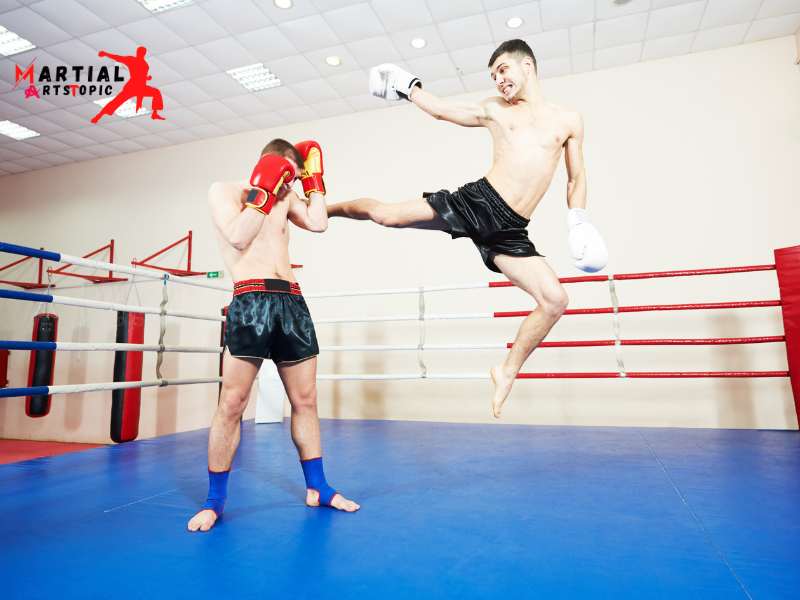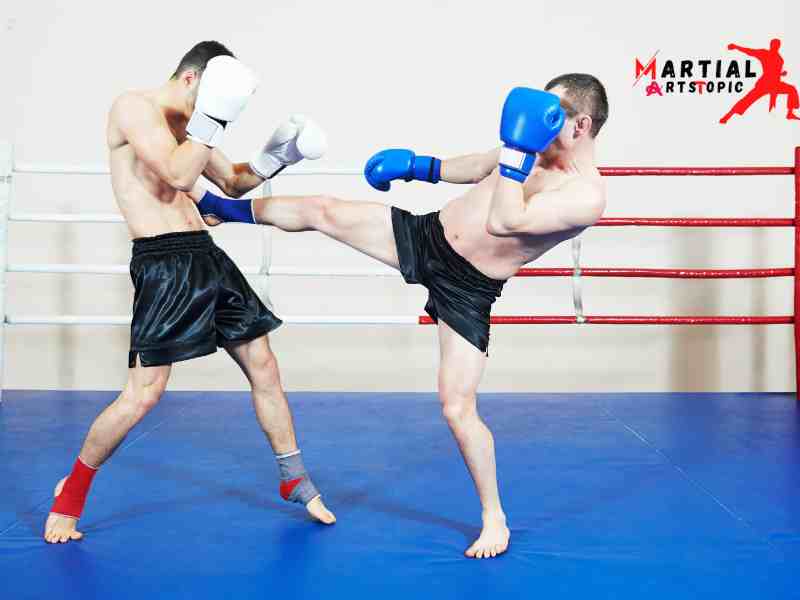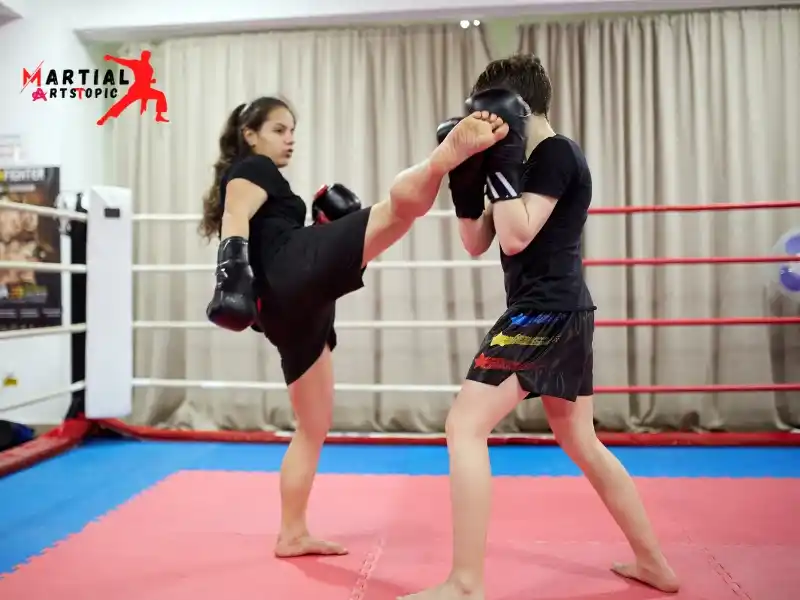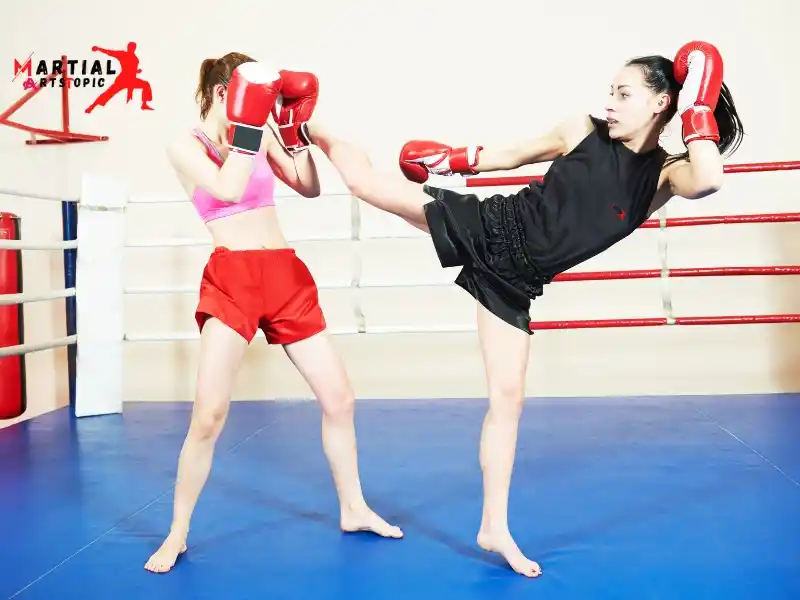
Savate vs Kickboxing: Unveiling the Similarities and Differences
Savate and kickboxing are two dynamic combat sports that have captivated martial arts enthusiasts for decades. The intriguing world of savate and kickboxing, unveiling their similarities and differences to provide a comprehensive understanding of these two disciplines. Savate, also known as French kickboxing, originated in France and is characterized by its unique combination of boxing punches and kicking techniques. On the other hand, kickboxing, with its roots in Japan, encompasses a diverse range of striking techniques derived from karate, Muay Thai, and boxing.
Similarities between Savate and Kickboxing
- Striking Techniques: Both savate and kickboxing emphasize striking techniques such as punches, kicks, knee strikes, and elbows.
- Footwork: Both disciplines prioritize agile footwork to maintain balance, evade attacks, and deliver powerful strikes.
- Training Equipment: Training in both savate and kickboxing involves the use of punching bags, focus mitts, and protective gear to enhance skill development and ensure safety during sparring sessions.
- Competitive Spirit: Savate and kickboxing competitions showcase the athletes’ prowess in delivering precise strikes while demonstrating exceptional athleticism.
Differences between Savate and Kickboxing
- Traditional Attire: Savate practitioners typically wear specialized footwear called “savate boots,” while kickboxers often opt for traditional boxing shoes or bare feet during training and competition.
- Rule set: Savate competitions adhere to specific rules governing permissible targets for striking, whereas kickboxing events may vary based on the organization’s regulations.
- Techniques Emphasis: Savate places a strong emphasis on using the legs for both offensive and defensive maneuvers because of its origins as a street-fighting style in France. Kickboxing incorporates a broader array of striking techniques from various martial arts disciplines.
What is Savate?
Savate is a unique and dynamic form of martial art that originated in France. Also known as French kickboxing, Savate incorporates both hand and foot techniques, making it a versatile and effective combat sport. The emphasis on precise kicking techniques sets Savate apart from other martial arts, making it an excellent choice for those looking to improve their agility, flexibility, and overall fitness. With its rich history and practical applications, Savate continues to attract enthusiasts worldwide who are eager to learn the art of graceful yet powerful striking.
What is Kickboxing?
Kickboxing is a dynamic and high-energy martial art that combines elements of boxing and various kicking techniques. It is an effective form of self-defense, fitness training, and competitive sport. Kickboxing provides a full-body workout, enhancing strength, flexibility, and cardiovascular endurance. With its roots in traditional martial arts such as Muay Thai and Karate, kickboxing has developed into a popular activity for individuals seeking an exhilarating way to stay fit and learn practical self-defense skills. Whether you’re looking to improve your physical fitness or learn valuable self-defense techniques, kickboxing offers a challenging yet rewarding experience for practitioners of all skill levels.
History and Origins
The history and origins of Savate and Kickboxing are rich with tradition and cultural influence. Savate, a French martial art, traces its roots back to the 18th century, incorporating elements of English boxing and street fighting techniques. On the other hand, Kickboxing has its origins in Japan during the 1960s, blending traditional karate with Western boxing. Both disciplines have developed over time, gaining popularity worldwide for their effective striking techniques and competitive spirit. Understanding the historical context of Savate vs Kickboxing provides valuable insight into their development and unique characteristics as martial arts.
Origins of Savate in France

Savate, also known as French boxing, has its roots deeply embedded in the streets of 19th century France. It originated as self-defense practiced by the lower classes in urban areas. The techniques of savate were developed to be effective in real-life combat situations, incorporating elements of kicking and striking with the hands.
One unique aspect of savate is its incorporation of footwear into the art. Practitioners wear specialized shoes called “chausson” which feature reinforced toes, allowing for powerful kicks. Over time, savate developed into a formalized sport with established rules and techniques, gaining popularity not only in France but also internationally.
Development and Evolution of Kickboxing in Various Countries
Kickboxing, has a more diverse origin story, with its development taking place across multiple countries. The roots of kickboxing can be traced back to ancient martial arts practices in Asia, where striking techniques using both hands and feet were incorporated into combat systems.
As time passed, various forms of kickboxing emerged in different countries such as Japan (with styles like Muay Thai), Thailand (with its own distinct form known as Muay Boran), and America (where it gained popularity through full-contact karate). The sport continued to develop with influences from Western boxing and traditional martial arts, leading to the establishment of unified rules and regulations.
Techniques and Styles
The comparison of Savate and Kickboxing, both martial arts styles have their unique techniques and strengths. Savate, also known as French kickboxing, emphasizes the use of the feet for striking, incorporating a variety of kicks such as front kicks, roundhouse kicks, and side kicks. On the other hand, Kickboxing is a stand-up combat sport that utilizes punches and kicks from multiple martial arts disciplines, including Karate and Muay Thai. Understanding the differences in footwork, striking techniques, and defensive tactics between these two styles can provide valuable insights for practitioners looking to expand their skills or choose a style that best aligns with their preferences.
Understanding Savate Techniques
Savate, also known as French kickboxing, is a unique martial art that combines elements of traditional boxing with graceful kicking techniques. Understanding Savate techniques involves mastering precise footwork, powerful kicks, and effective striking combinations. Practitioners of Savate focus on developing agility, speed, and flexibility to execute swift and accurate kicks. Key techniques in Savate include the front kick (chassé), side kick (coup de pied latéral), and roundhouse kick (coup de pied rond). Additionally, the use of the hands in Savate is emphasized through punches such as the direct punch (direct), uppercut (uppercut), and hook (crochet). Mastering these techniques requires dedication, discipline, and consistent training. Whether you’re a beginner or an experienced martial artist looking to expand your skills, delving into the world of Savate can be both challenging and rewarding.
The Techniques of Savate
Savate emphasizes the use of both hands and feet in combat, incorporating a wide range of striking techniques. The distinctive feature of this martial art is the utilization of specialized footwear called “chausson” for delivering powerful kicks. Here are some key techniques commonly associated with Savate:
- Fouetté: This signature technique involves executing rapid whipping kicks targeting the opponent’s upper body or head.
- Chassé: A straight-line kick designed to strike the opponent’s midsection with precision and force.
- Revers: A spinning kick utilized for defensive maneuvers and creating distance from the opponent.
- Coup de Pied Bas: Also known as the low kick, this technique targets the lower body, particularly the thighs and calves.
Styles within Savate
Within the world of Savate, practitioners often develop their own unique styles based on their preferences, physical attributes, and training background. Some common styles include:
- Classical Style: Traditionalists often adhere closely to the foundational techniques and principles of Savate, focusing on precision, timing, and grace in their movements.
- Combat Style: Those who are more drawn to sparring and practical application may adopt a more aggressive approach, emphasizing speed and power in their strikes.
- Freestyle Adaptations: Some practitioners blend elements from other martial arts into their Savate practice, creating hybrid styles that incorporate diverse techniques and strategies.
Embracing Versatility

One of the most interesting aspects of Savate is its adaptability in various combat scenarios. Whether you’re engaging in full-contact sparring or refining self-defense skills, this dynamic martial art offers a versatile toolkit for practitioners to draw from.
As you delve deeper into the world of Savate, remember that consistent practice and dedicated training are essential for honing your skills. Explore different techniques and styles to find what resonates with you personally while remaining open to learning from experienced instructors and fellow enthusiasts.
Basic techniques of kickboxing
- Jab-Cross: The jab-cross combination is a fundamental striking technique in kickboxing. It involves throwing a quick left jab followed by a powerful right cross, designed to keep your opponent at bay while setting up for heavier strikes.
- Roundhouse Kick: This iconic move sees the practitioner pivoting on one foot while swinging the other leg horizontally to strike the opponent with the shin or instep. It requires flexibility, balance, and precise timing to execute effectively.
- Front Kick: Also known as the push kick or teep, the front kick is delivered by thrusting the ball of the foot straight ahead into the opponent’s midsection or face. It serves as both an offensive and defensive maneuver.
- Hooks and Uppercuts: These are close-range punches aimed at targeting an opponent’s side (hooks) or chin (uppercuts). Proper body mechanics are crucial for generating power in these strikes.
The different styles within kickboxing
- Muay Thai Kickboxing: Originating from Thailand, Muay Thai emphasizes powerful kicks, knee strikes, clinching techniques, and elbow strikes. It’s known for its rigorous training regimen and effective use of all limbs for striking.
- Japanese Kickboxing: This style places more emphasis on boxing-style punches while incorporating low kicks similar to Muay Thai. It often incorporates judo throws because of its roots in Japanese martial arts.
- American Kickboxing: Characterized by its fast-paced action and emphasis on footwork and movement, American kickboxing blends elements of traditional karate with western boxing techniques.
- Full-Contact Kickboxing: As the name suggests, this style prioritizes full-force strikes with minimal protective gear. Fighters aim to win through knockouts or technical knockouts.
- Low-Kick Kickboxing: This variant focuses heavily on low kicks targeting opponents’ legs rather than relying solely on punching combinations.
Training and Conditioning
Comparing Savate and Kickboxing, both disciplines are known for their rigorous training and conditioning routines. Savate, a French martial art, focuses on precise kicking techniques while incorporating boxing elements. On the other hand, Kickboxing, originating from Japan, emphasizes powerful strikes using punches and kicks. The training regimen for both Savate and Kickboxing involves strength and agility exercises, flexibility drills, and cardiovascular workouts to enhance overall performance. Understanding the nuances of each discipline’s training methods can help practitioners tailor their conditioning programs to match the specific demands of either Savate or Kickboxing.
Training Tips for Savate
- Footwork and Agility: Savate places a strong emphasis on footwork and agility. Incorporate drills that focus on lateral movement, quick pivots, and maintaining balance while executing kicks. This will not only improve your overall mobility but also enhance your ability to deliver powerful strikes with precision.
- Kick Drills: Devote time to perfecting your kicks–front kicks, side kicks, roundhouse kicks, and hook kicks are all fundamental techniques in the Savate. Practice these kicks repetitively, paying close attention to proper form and execution.
- Combination Training: Work on combining different strikes into fluid combinations. Start with simple two-strike combos and gradually progress to more complex sequences. This will help you develop the ability to seamlessly transition between techniques during sparring or competition.
- Cardiovascular Conditioning: Savate requires high levels of cardiovascular endurance. Integrate cardio workouts such as running, cycling, or HIIT (High-Intensity Interval Training) sessions into your training regimen to build stamina and improve your overall fitness levels.
- Core Strength Development: A strong core is essential for generating power in kicks and maintaining stability during movement. Incorporate core-specific exercises like planks, Russian twists, and leg raises into your routine to strengthen your abdominal muscles and lower back.
Conditioning Strategies for Savate
- Flexibility Training: Flexibility is crucial for executing swift and powerful kicks in Savate. Make stretching a regular part of your training sessions to improve flexibility in the hips, hamstrings, calves, and groin muscles.
- Resistance Training: Utilize resistance bands or weights to enhance the strength of the muscles involved in kicking movements – quadriceps, hamstrings, glutes, and calves. Resistance training will help you develop explosive power in your strikes.
- Plyometric Exercises: Plyometrics can significantly boost your lower body explosiveness which is essential for delivering rapid-fire kicks in Savate. Include exercises like box jumps, squat jumps, and jumping lunges in your training program.
- Balance Workouts: Enhance your balance by incorporating stability exercises such as single-leg squats, bosu ball drills, or wobble board exercises into your routine. Improved balance translates into better control over your movements during sparring or competitive bouts.
- Interval Pad Work: Engage in interval pad work sessions with a partner where you alternate between striking combinations at varying intensities within specific time intervals This type of training simulates real-time combat scenarios while also building endurance.
Kickboxing Training Tips

- Master the Basics: Before diving into advanced techniques, it’s crucial to master the fundamental movements of kickboxing. Focus on perfecting your stance, footwork, punches, kicks, and defensive maneuvers.
- Shadow Boxing: Shadow boxing is an excellent way to refine your form, footwork, and combinations. Visualize an opponent in front of you and practice throwing crisp punches, swift kicks, and seamless transitions between offense and defense.
- Bag Work: Incorporating heavy bag training into your routine can enhance power, speed, and endurance. Work on delivering powerful strikes while maintaining proper technique. Utilize various combinations to simulate real fight scenarios.
- Sparring: Controlled sparring sessions with partners of similar skill levels can provide invaluable practical experience. Focus on applying your techniques in a dynamic environment while honing your timing, distancing, and defensive instincts.
- Cardiovascular Conditioning: Kickboxing demands exceptional cardiovascular endurance. Engage in activities such as running, cycling, or jump rope to build stamina and increase your overall fitness level.
Conditioning Exercises for Kickboxing
- Interval Training: High-intensity interval training (HIIT) is ideal for replicating the bursts of energy required during kickboxing bouts. Incorporate sprint intervals, burpees, or kettlebell swings to simulate the intensity of rounds in the ring.
- Plyometric Drills: Plyometric exercises like box jumps or explosive push-ups can improve lower body explosiveness and agility – essential for delivering powerful kicks and evasive movement.
- Core Strengthening: A strong core is pivotal for generating power in strikes and maintaining balance during rapid movements. Include exercises such as planks, Russian twists, and leg raises to fortify your midsection.
- Flexibility Training: Flexibility plays a crucial role in executing high kicks with ease while reducing the risk of injury. Integrate stretching routines targeting the hamstrings, hip flexors, calves, and shoulders into your regimen.
- Strength Training: Incorporate resistance training to build functional strength in key muscle groups utilized during kickboxing movements–focus on compound exercises like squats, deadlifts, lunges, and overhead presses.
Benefits and Drawbacks

Savate and Kickboxing, it’s essential to consider the benefits and drawbacks of each martial art. Savate, also known as French kickboxing, offers practitioners a unique blend of elegant footwork and powerful kicking techniques. Its emphasis on agility and precision can greatly improve balance, coordination, and cardiovascular fitness. However, because of its focus on kicks rather than punches, practitioners may find themselves at a disadvantage in close-range combat situations. On the other hand, Kickboxing provides a well-rounded approach to striking with a combination of punches, kicks, and knee strikes. This versatility makes it effective in various combat scenarios but may require more extensive training to master the diverse skill set. Understanding these key differences can help martial artists make an informed decision based on their individual goals and preferences.
Benefits of Savate
- Full-Body Workout: Savate training provides an excellent full-body workout, incorporating cardiovascular exercise, strength training, and flexibility development through its dynamic kicking and punching techniques.
- Self-Defense Skills: Practicing Savate equips individuals with practical self-defense skills that can be used in real-life situations. The focus on striking and footwork enhances one’s ability to defend themselves effectively.
- Mental Discipline: Engaging in regular Savate practice promotes mental discipline and focus. The strategic aspect of the sport encourages practitioners to think critically and make split-second decisions during combat.
- Stress Relief: Like other martial arts, Savate offers a healthy outlet for stress relief and emotional balance. The intense physical activity can help alleviate tension and improve overall mental well-being.
- Cultural Connection: Embracing Savate allows practitioners to connect with the rich history and culture of France, where the art originated. It provides an opportunity for cultural immersion and appreciation.
Drawbacks of Savate
- Limited Ground Fighting Techniques: Unlike some other martial arts disciplines, such as Brazilian Jiu-Jitsu or judo, Savate focuses primarily on stand-up striking techniques, which may limit proficiency in ground fighting scenarios.
- Risk of Injury: Because of the dynamic nature of kicks and punches involved in Savate training and sparring, there is an inherent risk of injury if proper safety measures are not followed diligently.
- Equipment Costs: As with many combat sports, the cost of necessary equipment such as gloves, shin guards, mouth guards, and protective gear can add up over time, making it a potentially expensive pursuit.
- Limited Availability: Depending on location, finding a reputable Savate gym or instructor may prove challenging compared to more widely practiced martial arts like karate or taekwondo.
- Competitive Nature: While competition can be a positive aspect for many practitioners, others may find the competitive nature of Savate daunting or stressful.
Benefits of Kickboxing
- Full-Body Workout: Kickboxing engages multiple muscle groups simultaneously, providing an intense full-body workout. It helps improve cardiovascular health, endurance, strength, and flexibility.
- Self-Defense Skills: Learning kickboxing techniques equips you with valuable self-defense skills that can boost your confidence and sense of security in potentially dangerous situations.
- Stress Relief: The high-intensity nature of kickboxing can serve as a fantastic stress-reliever. The combination of physical exertion and mental focus can help alleviate tension and reduce stress levels.
- Weight Management: Kickboxing is an effective way to burn calories and shed excess pounds. It increases metabolism and helps in maintaining a healthy weight when combined with a balanced diet.
- Improved Coordination and Balance: Practicing kickboxing requires coordination between different parts of the body, leading to improved balance and overall body control.
Drawbacks of Kickboxing
- Risk of Injury: The fast-paced nature of kickboxing involves powerful kicks and punches, which can lead to injuries if not performed with proper technique or protective gear.
- Physical Demands: Kickboxing can be physically demanding, especially for beginners or those who are not accustomed to regular exercise. It may take time for individuals to build up the required stamina and strength.
- Cost of Equipment: Quality kickboxing gear such as gloves, pads, and protective equipment can be expensive, adding to the overall cost of practicing this martial art.
- Intimidating Environment: Some individuals may find the intense atmosphere of a kickboxing class or gym intimidating, especially if they are new to the practice or lack confidence in their abilities.
- Time Commitment: Regular practice is essential for progress in kickboxing, which may require a significant time commitment that some individuals might find challenging to accommodate in their schedules.
Effectiveness in Self-Defense
The effectiveness of Savate and Kickboxing in self-defense, it’s essential to consider their unique techniques and applications. Savate, a French martial art, emphasizes precise footwork and powerful kicks, making it effective for long-range combat. On the other hand, Kickboxing incorporates a combination of punches and kicks from various martial arts, focusing on close-range striking. Both disciplines have their strengths in self-defense situations: Savate’s emphasis on kicking techniques can create distance from an attacker, while Kickboxing’s versatility in striking can be beneficial in close-quarters combat. Ultimately, the effectiveness of each martial art in self-defense depends on the practitioner’s skill level and adaptability to different scenarios.
Savate vs Kickboxing: Which Martial Art Is Right for You?
Savate vs kickboxing are two popular martial arts that have captured the interest of many aspiring fighters. Both disciplines have their own unique techniques, traditions, and philosophies, making them appealing options for individuals looking to develop their fighting skills.
Savate: The Elegant French Art of Foot Fighting
Savate, also known as French kickboxing, is a striking martial art that focuses on precise kicks and punches. What sets savate apart from other striking arts is its emphasis on using the feet as the primary striking weapon. Practitioners of savate are known for their graceful footwork and swift kicks, making it a visually stunning art to watch and practice.
The sport has a rich history dating back to 19th-century France, where it was developed as a self-defense and combat sport. Savate incorporates both hand strikes (punches) and kicks, with an emphasis on maintaining distance from opponents while delivering powerful blows with precision.
Kickboxing: The Dynamic Art of Combining Punches and Kicks

Kickboxing originated in Japan in the 1960s before gaining popularity worldwide as a full-contact combat sport. This martial art combines traditional boxing with karate-style kicks, resulting in a dynamic and versatile fighting style. Kickboxers are trained to use both their fists and legs effectively, allowing for a diverse range of striking techniques during competition or self-defense scenarios.
The sport has developed over time to encompass various styles such as Muay Thai kickboxing, Dutch kickboxing, and American kickboxing, each with its own set of rules and techniques. Kickboxing competitions often showcase intense bouts of athleticism and strategy as fighters exchange powerful strikes while maneuvering around the ring.
Choosing the Right Style for You
When deciding between savate and kickboxing, it’s essential to consider your personal preferences, fitness goals, and fighting style aspirations. Here are some factors to weigh when making your choice:
- Footwork Emphasis: If you’re drawn to the elegance of footwork and precise kicking techniques, savate may align well with your interests. On the other hand, if you prefer a more balanced approach that incorporates both punches and kicks seamlessly, kickboxing could be your calling.
- Cultural Influence: Consider exploring the historical background and cultural significance behind each martial art. Understanding the roots of savate’s French heritage or delving into the diverse influences shaping modern kickboxing styles can deepen your appreciation for these disciplines.
- Training Environment: Evaluate the availability of training facilities or experienced instructors specializing in either savate or kickboxing within your local area or online communities.
- Competition Goals: Are you interested in pursuing amateur or professional competitions? Researching the competition landscape for both savate and kickboxing can help guide your decision based on your competitive aspirations.
- Physical Conditioning: Assess how each discipline aligns with your current fitness level and long-term conditioning goals. For instance, if you aim to enhance flexibility through extensive kicking drills, savate might offer targeted training methods tailored to your needs.
Ultimately, both savate and kickboxing present valuable opportunities for individuals seeking physical challenge, mental discipline, and self-improvement through martial arts practice. Whether you’re captivated by savate’s elegant foot fighting techniques or enticed by kickboxing’s dynamic blend of punches and kicks,
Which Martial Art Is Right for You?
Choosing between Savate and Kickboxing ultimately depends on your personal preferences, fitness goals, and aspirations within martial arts. If you’re drawn to precision kicking techniques with an emphasis on agility and footwork mastery, then exploring Savate might be an exciting prospect for you.
On the other hand, if you prefer a versatile striking discipline that incorporates various punching and kicking combinations alongside clinch work or knee strikes as part of your training repertoire or competitive aspirations; then venturing into kickboxing could be your ideal choice.
Conclusion
Savate and Kickboxing are dynamic martial arts disciplines that offer unique techniques and strategies for practitioners. While Savate emphasizes the use of kicks with specialized footwear, Kickboxing focuses on a combination of punches and kicks without the use of footwear. Both styles have their strengths and weaknesses, making them valuable additions to any martial artist’s repertoire. Ultimately, the choice between Savate and Kickboxing depends on individual preferences, goals, and training objectives. Regardless of which path one chooses, both disciplines offer exciting opportunities for self-improvement and physical fitness.
